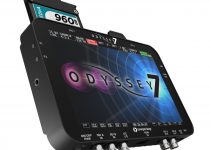DaVinci Resolve 11 is not only one of the most powerful and popular colour grading software suites available today, but also it has become an extremely versatile editor as well with over 100 new editing features and significant improvements added to its latest version.
However, the workflow could be quite overwhelming from time to time. As with any other platform, there are certain tips and tricks one should be aware of to be able to explore the full potential of the app. The next video tutorial would give you an idea how to grade or light a particular moving area of your video using one of the most powerful assets of Resolve – the Tracker.
Face Tracking is an essential and easy to execute technique inside Resolve 11 that definitely would help you to accomplish a more advanced and complex grade of your image by isolating and further enhancing certain moving objects and different parts of them. You can use it in many varied situations working with Resolve’s Power Windows that are extremely powerful and efficient tools.
DaVinci Resolve has an incredibly simple, yet powerful object tracker that allows you to track quickly and accurately any Power Window to follow any moving object in the frame. In particular, you can use the tracker to match each window’s position to either foreground or background elements that move within the frame.
Before you start, inside DaVinci you should create a new timeline first and drag your clip onto the timeline. After, you should go to the Colour section of the software. It’s a good practice to do some initial colour adjustments of the whole image first. The next step is to create a new Node by right clicking inside the Nodes window and select the Add Node and then Corrector.
Simply drag the new node to the line right after the first one. Select the newly created node, go to Window tab to the bottom of the screen and enable the mask for the object in your video that you want to further isolate and manipulate. After you adjust the mask you should go to the Tracker tab. You have the option to track the selected object forward and backwards from the frame where the marker on your timeline is set.
After pressing one of the two arrows DaVinci would perform the tracking for you. The software automatically will place a bunch of tracking points within the window you created and will perform the tracking from the current frame. After the tracking is finished you can use the Color Wheels and other additional settings such as Contrast, Hue, Saturation etc to achieve the desired look of your object.
And, this is the final result from the tutorial.
This technique will be extremely beneficial in situations where, for example, you want to recreate the whole lighting set up of your scene digitally by adding different masks to objects in your frame that you want to stand out.
You should be aware, though, that this type of hard manipulations could easily ruin your image, especially if you are not using professional source codecs or Raw as you will need a higher bit rate footage (a 10bit ProRes footage helps a lot) and a ton of colour information in order to preserve the details of the image preventing it from falling apart.
This simple technique is only a fraction of the long list of assets DaVinci Resolve 11 provides. But perhaps the most exciting part is the fact that now you can download the Lite version for free right here, or you can get the full version of Resolve included with the purchase of a Blackmagic Production Camera, BMCC, or URSA.
Disclaimer: As an Amazon Associate partner and participant in B&H and Adorama Affiliate programmes, we earn a small comission from each purchase made through the affiliate links listed above at no additional cost to you.


